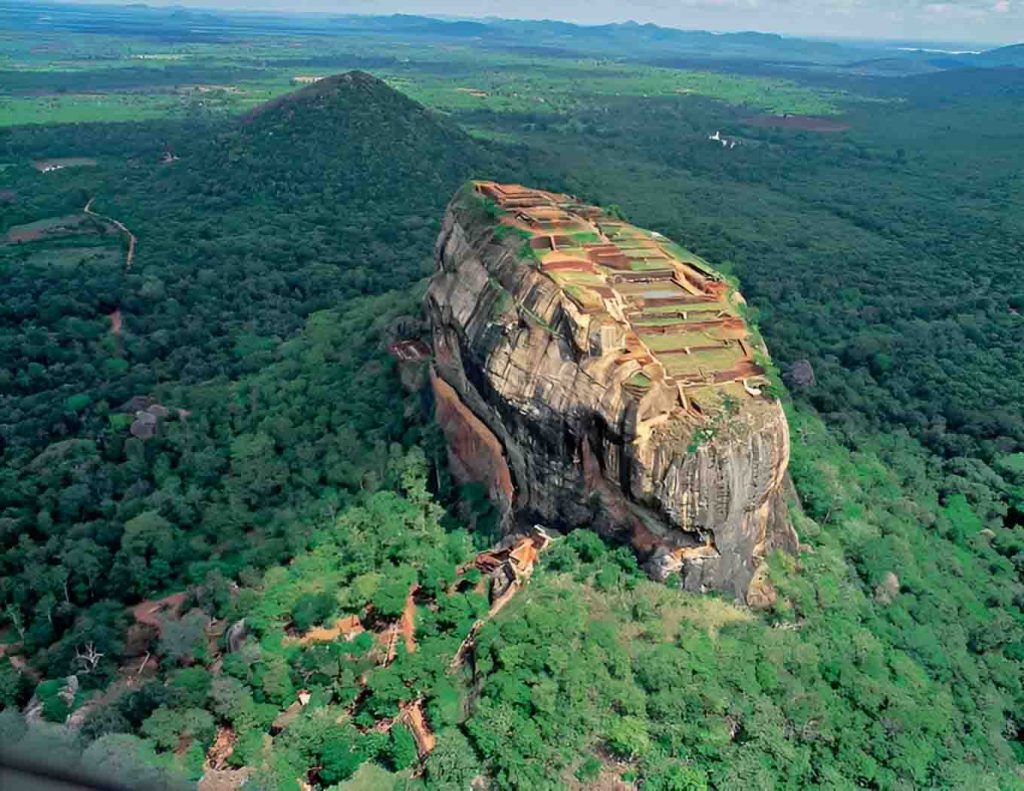
Unseen Echoes of Past Grandeur: Sri Lanka’s Other Ancient Rock Fortresses
While the majestic Lion Rock of Sigiriya stands as Sri Lanka’s most iconic ancient site – and for good reason – the island harbors several equally magnificent rock fortresses that remain wonderfully undiscovered.
Sigiriya’s significance cannot be overstated: this 5th-century architectural marvel combines a royal palace, an urban complex, and sophisticated water gardens into one awe-inspiring monument. Its famous frescoes and mirror wall have earned it UNESCO World Heritage status and the nickname “Eighth Wonder of the World.”
But while thousands queue daily to climb Sigiriya’s steps, there exist other ancient rock formations across the island that offer equally compelling histories and often more authentic experiences. These hidden monuments provide not just spectacular views and fascinating archaeology, but the rare privilege of experiencing them in peaceful solitude.
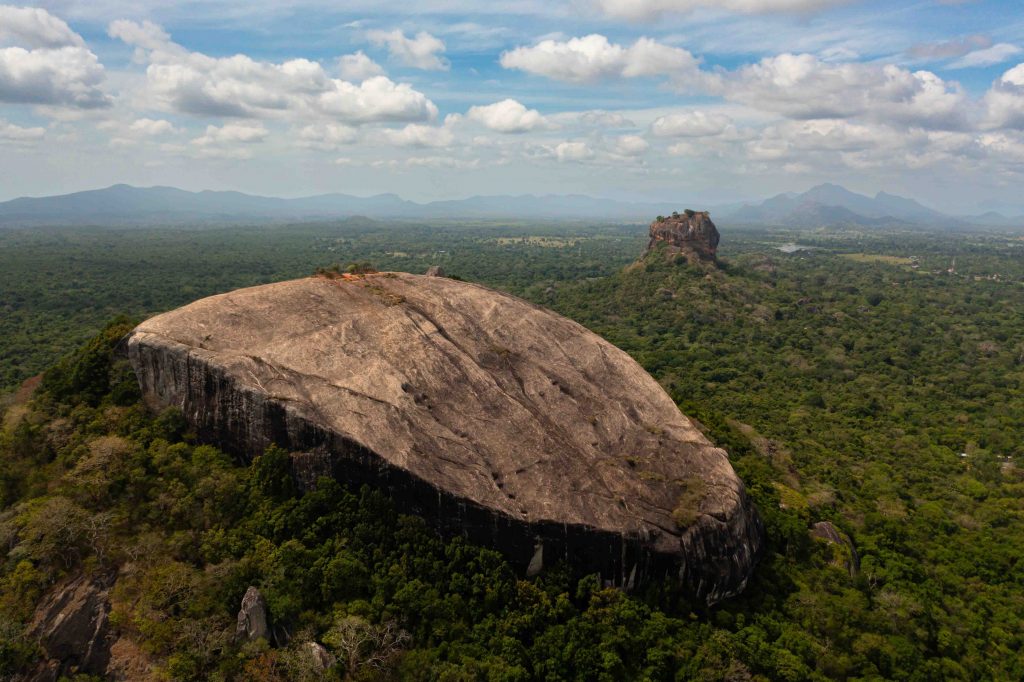
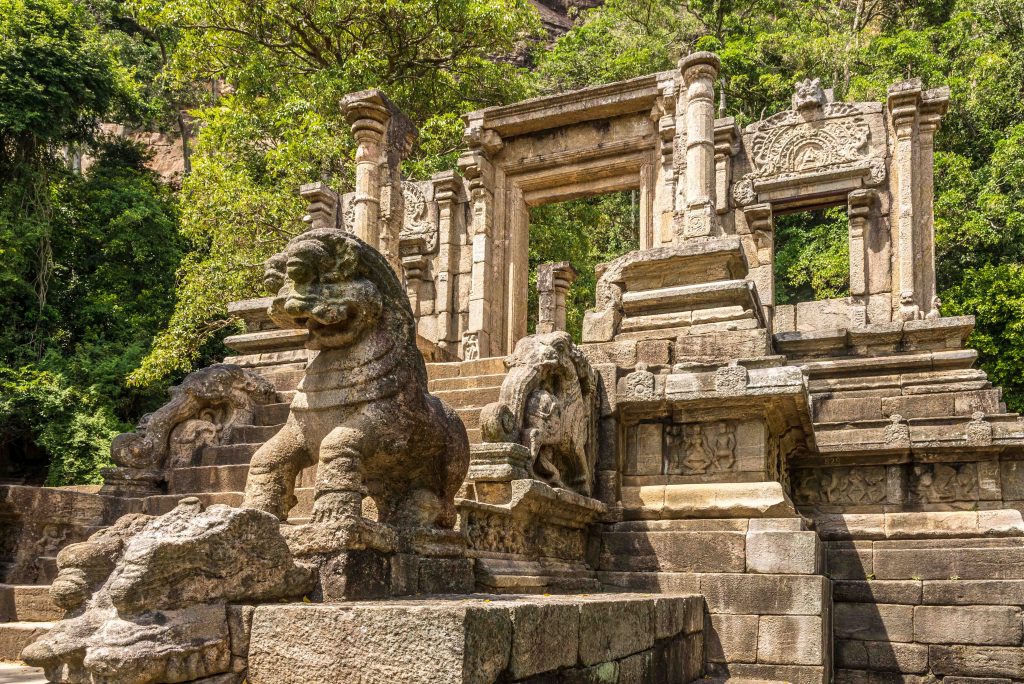
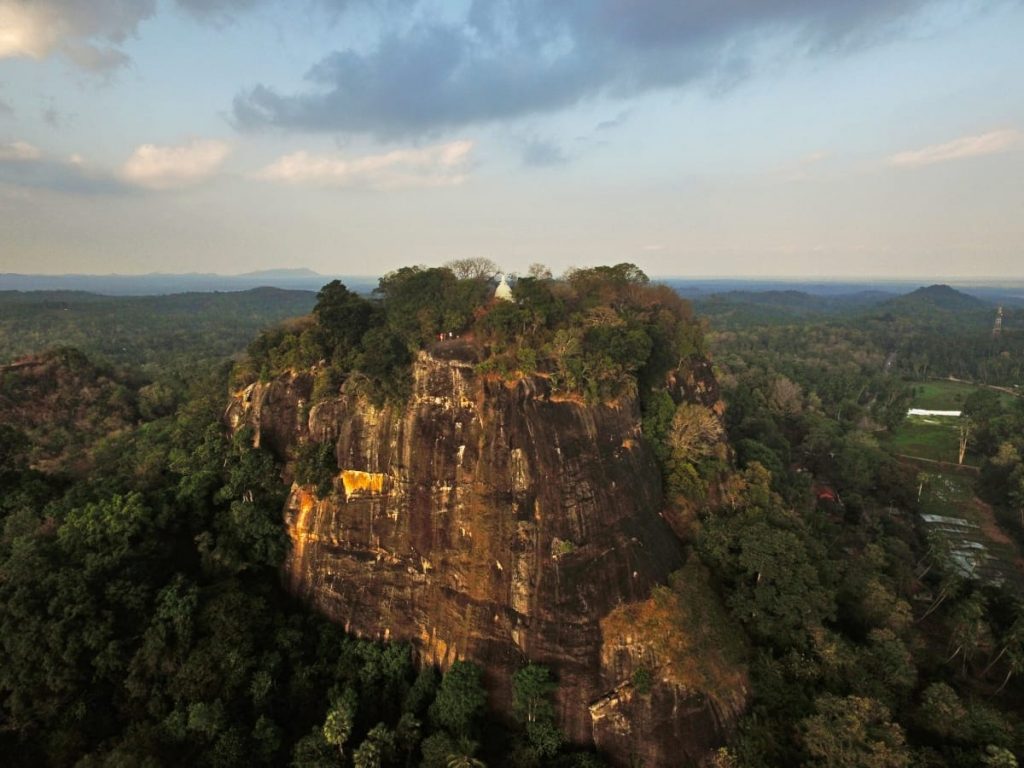
1. Danigala: The Alien Mountain
Rising mysteriously from the eastern plains near Aralaganwila, this distinctive dome-shaped formation has earned the nickname “Alien Mountain” due to its unusual appearance. Ancient Brahmi inscriptions and cave paintings dating back 2,500 years tell tales of early human settlement, making it one of Sri Lanka’s most significant prehistoric sites.
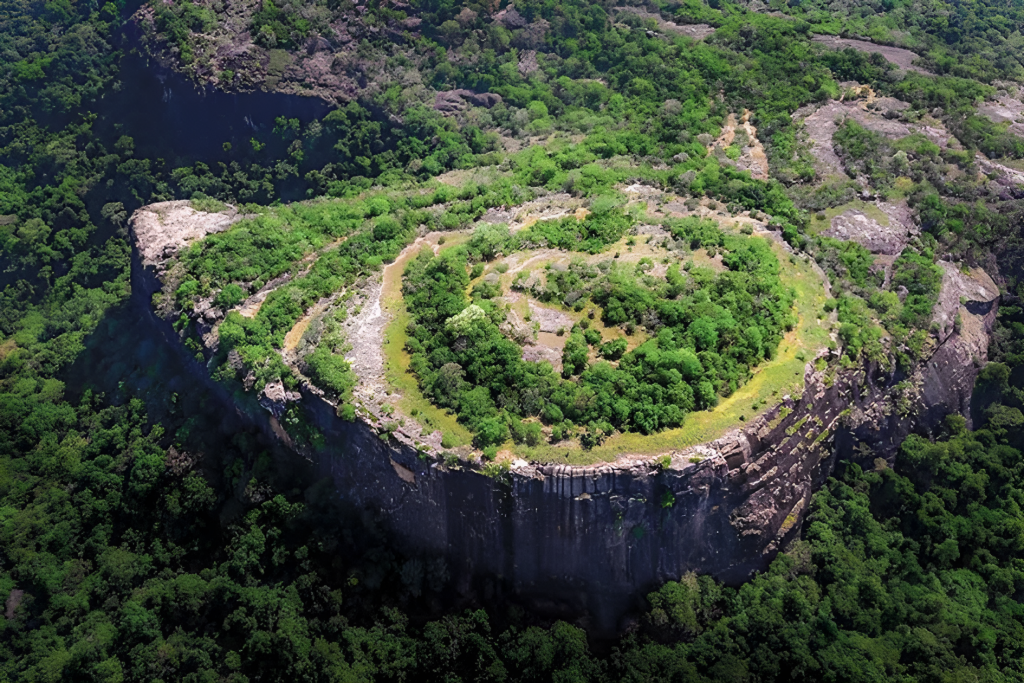
The two-hour climb through diverse terrain reveals a tapestry of Sri Lanka’s natural heritage: medicinal plants used for centuries, rare bird species, and hidden cave formations. At the summit, 360-degree views stretch across the eastern wilderness to the distant coastline. The site’s archaeological significance is still being uncovered, with recent discoveries suggesting it was once a crucial Buddhist meditation retreat.
Insider Tip: Start your climb early morning before 7 AM to avoid the heat and catch the spectacular eastern light across the plains. The northern face offers the best preserved cave paintings.
2. Dimbulagala Rock Monastery
Rising dramatically from the eastern plains, this ancient Buddhist monastery complex dates back to pre-Christian times. The mountain, reaching 1,925 feet, was once home to the indigenous Vedda people before becoming a Buddhist sanctuary. Its caves hold evidence of continuous human habitation for over 2,000 years.
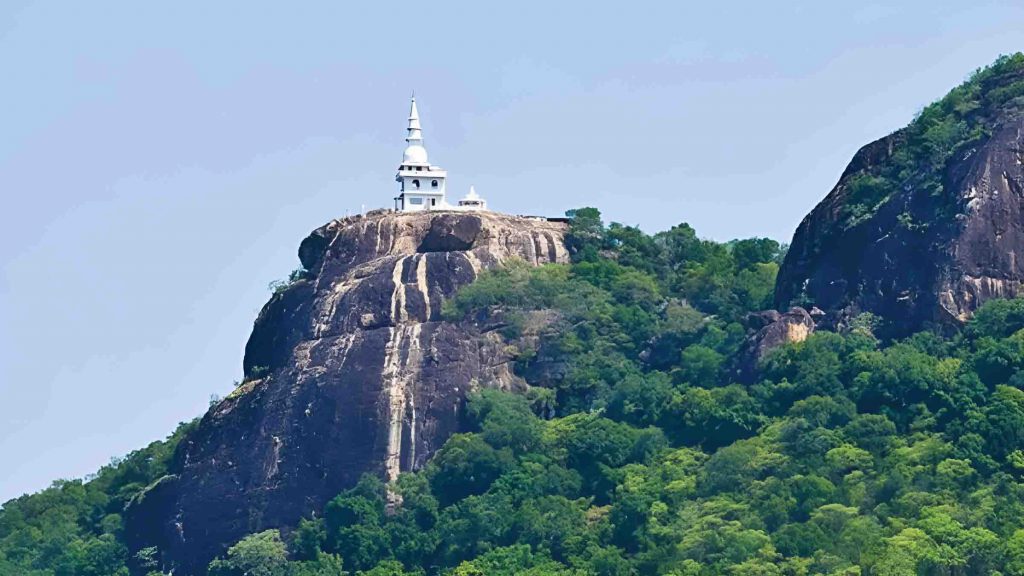
Unlike more developed ancient sites, Dimbulagala’s pathways and caves remain largely unaltered. The moderate 45-minute climb passes 10 major cave complexes, each telling its own story through ancient inscriptions and art. The monastery played a crucial role during the Polonnaruwa period, serving as a seat of learning for both Buddhism and traditional medicine.
Today’s visitors might encounter orange-robed monks continuing ancient traditions, adding a living dimension to the site’s rich history. The caves offer glimpses of both Hindu and Buddhist influence, with some artwork showing rare examples of cultural fusion.
Insider Tip: Visit during the morning alms-giving to witness ancient Buddhist traditions still in practice. The eastern caves offer the best-preserved examples of ancient architectural features.
3. Yapahuwa Rock Fortress
Once serving as Sri Lanka’s medieval capital (1273-1284), Yapahuwa’s grandeur reflects its brief but significant role in Ceylon’s history. Rising 300 feet above the surrounding plains, the fortress showcases a unique blend of military might and artistic excellence.
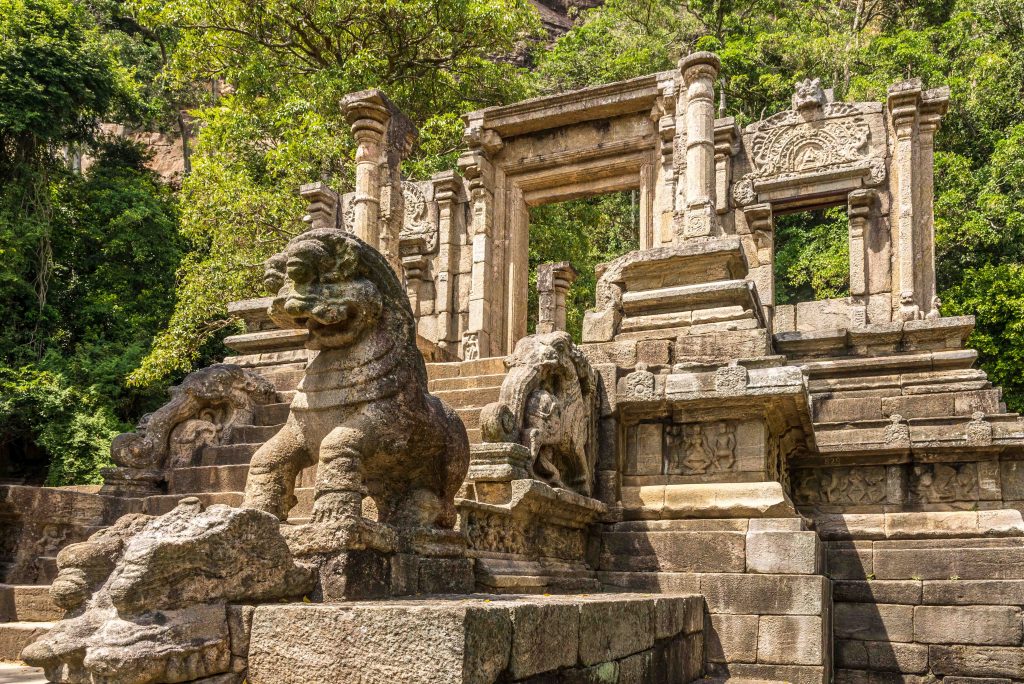
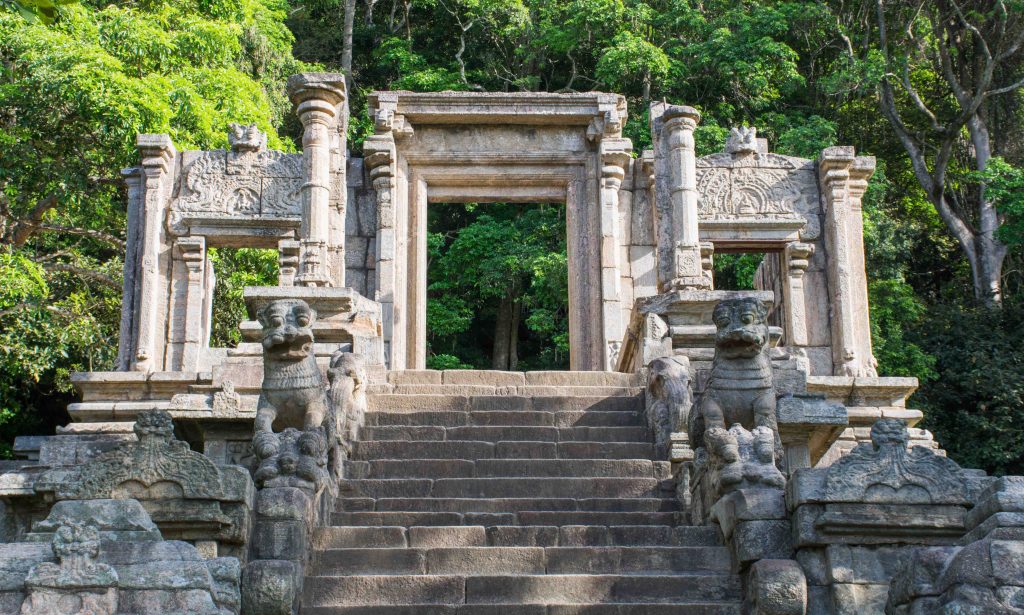
The site’s crowning glory is its ornate stone stairway, featuring elaborate carvings that rival those of Sigiriya. The famous stone lions, though smaller than Sigiriya’s, display remarkable craftsmanship. Archaeological evidence, including Chinese coins and pottery, reveals Yapahuwa’s role in ancient maritime trade routes.
The fortress complex includes several distinct zones: military fortifications at the base, religious buildings on the summit, and residential areas in between. The remaining walls of the royal palace offer tantalizing glimpses of its former splendor, while the restored temple at the summit still serves as an active place of worship.
Insider Tip: Time your visit for late afternoon when the sun illuminates the western face of the rock, creating perfect photography conditions. The Chinese coins were found near the northern rampart – ask your guide to show you this historically significant area.
4. Pidurangala Ancient Rock Temple
While visible from Sigiriya, this rocky outcrop holds its own fascinating history. Originally constructed by King Kashyapa (who built Sigiriya), Pidurangala served as the new home for monks displaced from Sigiriya when it was converted into a palace.

The climb, though more challenging than Sigiriya’s, offers several unique features:
- A massive reclining Buddha statue constructed of brick and stucco
- Ancient cave temples with preserved paintings
- The best vantage point for photographing Sigiriya
- Rock formations that tell the geological story of the region
The temple complex includes both ancient and modern elements, as it remains an active place of worship. The final scramble to the summit requires some agility but rewards climbers with an unparalleled view of the Cultural Triangle.
Insider Tip: Pack a torch if planning a sunrise visit – the final scramble requires both hands. The eastern cave complex contains the best-preserved medieval paintings.
5. Mulkirigala Rock Temple
Often called ‘Little Sigiriya’ in the south, this 205-meter-high rock temple complex represents a different era of Sri Lankan architecture. Five natural cave complexes, arranged in ascending levels, showcase the evolution of Buddhist art across different periods of Lankan history.

Each cave level tells its own story:
- Lower caves: Showcase 18th-century murals depicting Buddhist tales
- Middle caves: Feature unique hybrid architectural styles
- Upper caves: House some of the best-preserved ancient paintings in southern Sri Lanka
The final ascent via steep stairs leads to a white dagoba offering panoramic views stretching to the Indian Ocean. The site’s isolation helped preserve its authentic character, including original paintings that offer insight into different periods of Lankan artistic styles.
Insider Tip: Visit during weekend mornings to see local families making offerings, adding a living dimension to this ancient site. The western caves offer the best examples of Kandyan-era painting techniques.
Planning Your Visit
These sites require more planning than their famous counterparts but reward the effort with authentic experiences. Many lack formal ticket offices or set hours – this is where local knowledge becomes invaluable. Our guides can arrange visits to any of these sites, often incorporating them into broader cultural journeys through their respective regions.
Responsible Tourism
As these sites gain recognition, responsible visitation becomes crucial. Many still serve as active places of worship or home to monastery communities. We ensure our guests understand local customs and dress codes, helping preserve these places’ sanctity and authenticity for future generations.
Ready to explore Sri Lanka’s hidden rock fortresses? Contact us to craft a journey that reveals these magnificent monuments while respecting their cultural significance.
Please drop us a note at: info@pearl-of-the-indian-ocean.com


